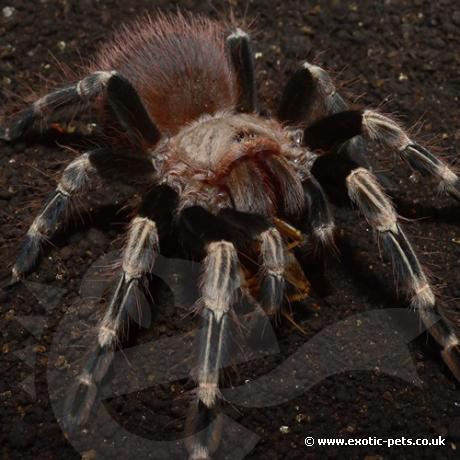

The White Striped Birdeater is a large terrestrial species reaching a leg span of 15 to 17cm. They are native to rainforests and savannahs of Brazil and Paraguay.
| Lifestyles | Terrestrial |
|---|---|
| Adult Size | 18-20cm |
| Growth Rate | Average |
| Environment | Tropical rainforests / Savannahs |
| Suitability | Intermediate |
| Temperament | Skittish and Defensive |
A large species of tarantula reaching a legspan of 15-17cm. These spiders are known for their distinctive white stripes on their legs. They have a beige to grey coloured carapace and have red setae hair over their abdomen. This species often gets confused with Acanthoscurria geniculata (Giant White Knee Tarantula) by new keepers.
Very little information is available about the exact habitat of the Nhandu chromatus, we do know that they can be found in the rainforests and savannahs of Brazil and Paraguay. They are certainly an opportunistic burrower and would most likely take over burrows left by other animals, within tree roots or fallen branches.
For an adult, they need to be kept in a terrestrial style setup. We would recommend providing at least 7-10cm of substrate depth. Hides can be provided in the form of an artificial hide or our personal preference is to sink a curved piece of cork bark into the substrate. This will help form a natural burrow.
A small water bowl should be provided, as with most birdeating species you will see them drinking occasionally. Temperatures should be maintained between 24-28C (75-82F) and a humidity of 60-70%.
Feed on live insects and remove any uneaten food within 24hrs; this is to prevent your Tarantula being bitten during moulting.